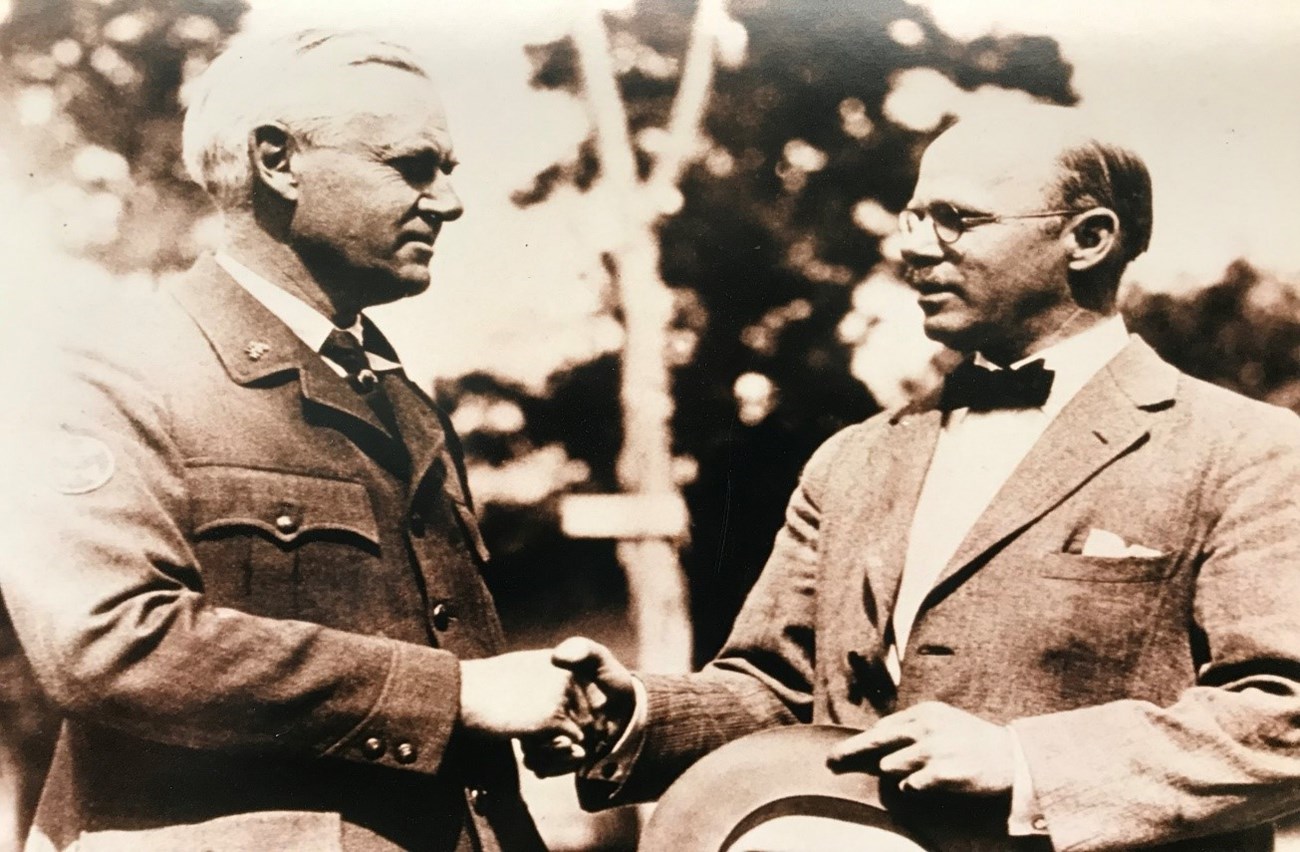Last updated: April 21, 2020
Article
Innovating Park Transportation: Transforming a Long-Running Partnership
In the 1920s, a new National Park System was beginning to react to a growing demand for new automobile travel. In the book, “National Park Roads: A Legacy in the American Landscape,” National Park Service (NPS) Historian Timothy Davis chronicled the early days of road planning and the importance of maintaining the surrounding park landscapes and environmental aesthetics. Indeed, first NPS Director Stephen Mather and his staff were instrumental in working with then Bureau of Public Roads (precursor to today’s Federal Highway Administration- FHWA) leaders in discussing this path forward. Those early discussions provided early success, helping flourish the partnership, although not without adjustment to address the more complex NPS transportation network.

Historic American Engineering Record
Now with the proliferation of mobile-device technologies and social media platforms, getting those one-of-kind photos are a force that is driving visitation to key, unique and iconic places within the NPS. Today, along with addressing increased congestion during normal operational times, parks again are faced with another cycle of major work to the legacy road and bridge networks coupled with re-envisioning and replacing first generation transit fleets.
With current world events consuming much of our time and focus now, one element is clear: technological advances, tools, and digital connections are as important now as they’ve ever been. And with concurrent increases in mobile data platforms, transportation network and vehicle enhancements, and connecting mechanisms between vehicles and infrastructure being tested, our overall mobility is on the cusp of great change. While it’s hard to envision when and how many of these steps forward will come to fruition, now is the time for the NPS to explore the future of transportation to, from and within our parks.
The U.S. Department of Transportation (DOT) identifies future innovation as a priority. To that end, NPS has been working on a new draft Memorandum of Understanding (MOU) with DOT and FHWA to work more closely together on this transportation future. The MOU is targeted to be signed later in 2020.
DOT views parks as excellent testing grounds for showcasing transportation technology and innovation. We’ve already seen that with several advances regarding certain guard rail, pavement analysis, and bridge rehabilitations. Looking to the more significant changes coming in the industry, the new MOU will help us guide larger-scale innovation deployment where it makes sense.
We briefly pause now, as part of National Park Week 2020, to recognize “Transportation Tuesday.” We will be exploring future park involvement in these innovative activities along with moving forward on other needed improvements. As our partnerships build the groundwork over the next few years for possible park-level showcases, parks will be leading the way in showing how transportation innovation can best fit into a park environment while ensuring a high level of park operation, mobility and visitor experience.
Then, we can more comfortably take new handshake photos advancing our partnership while benefiting from innovation testing and eventual deployment.
